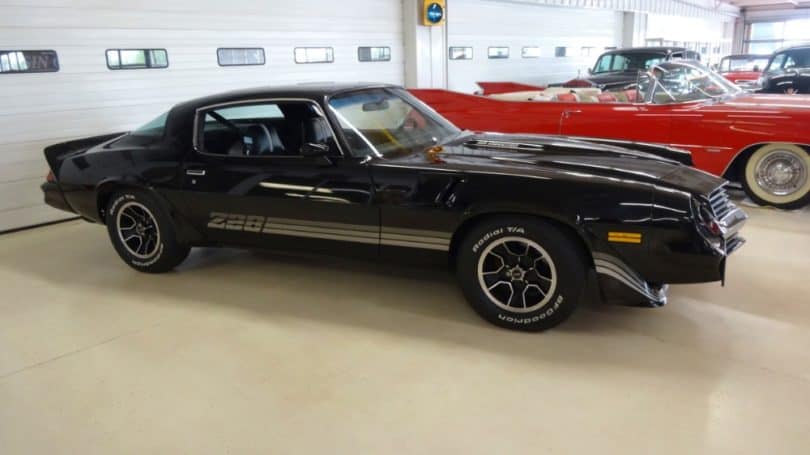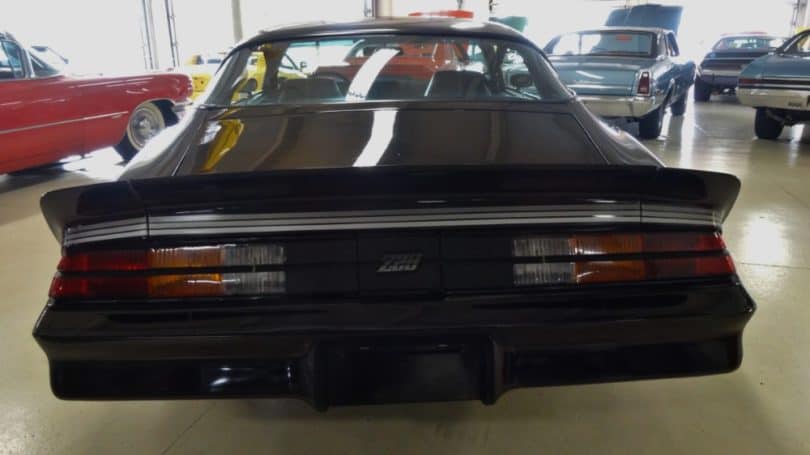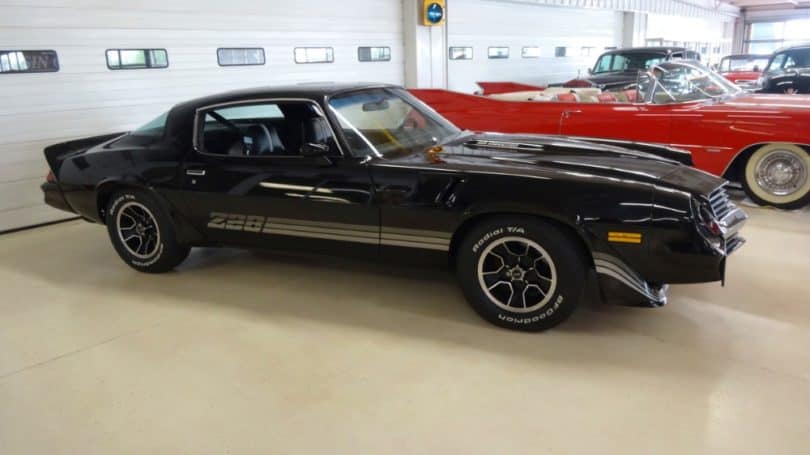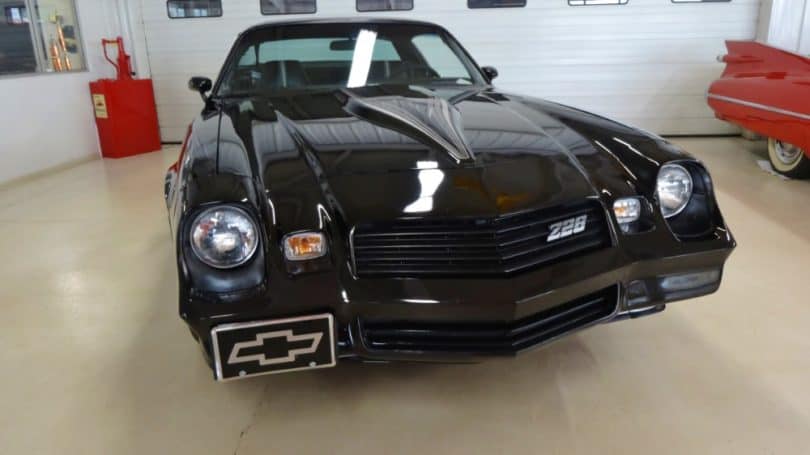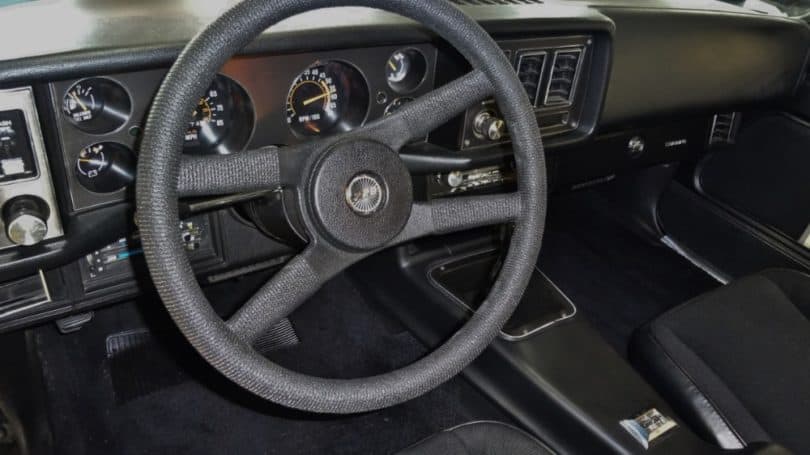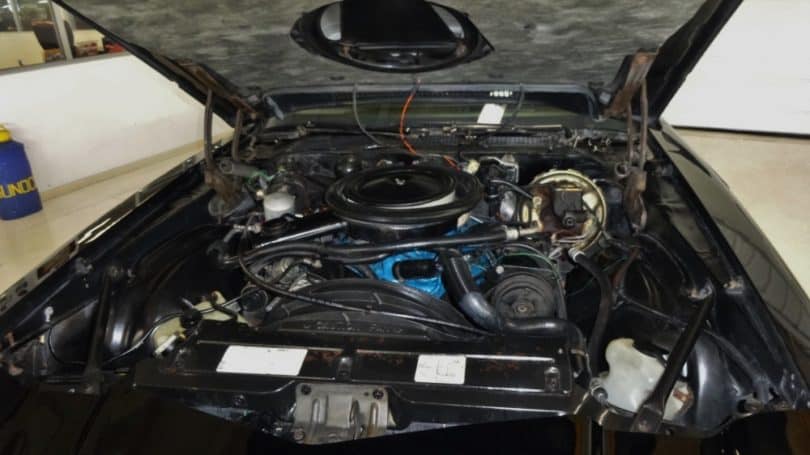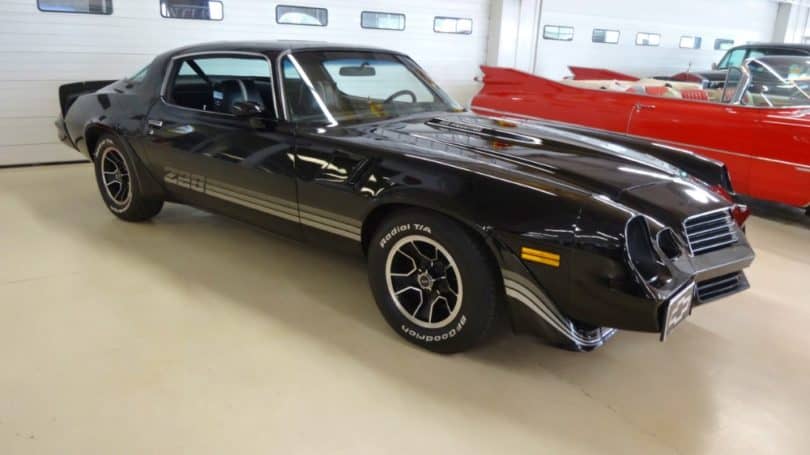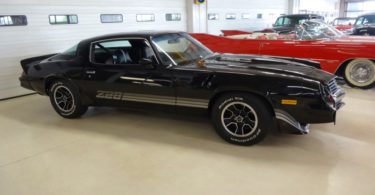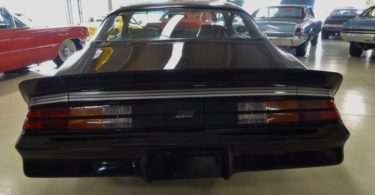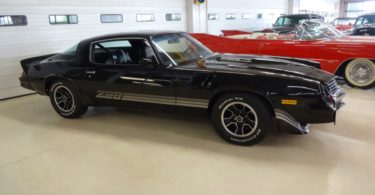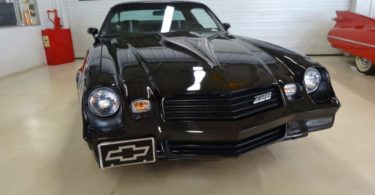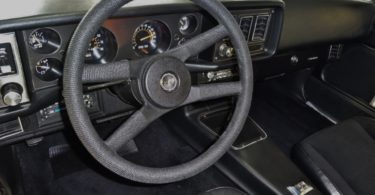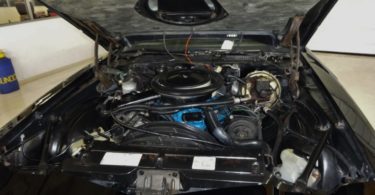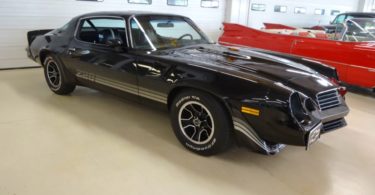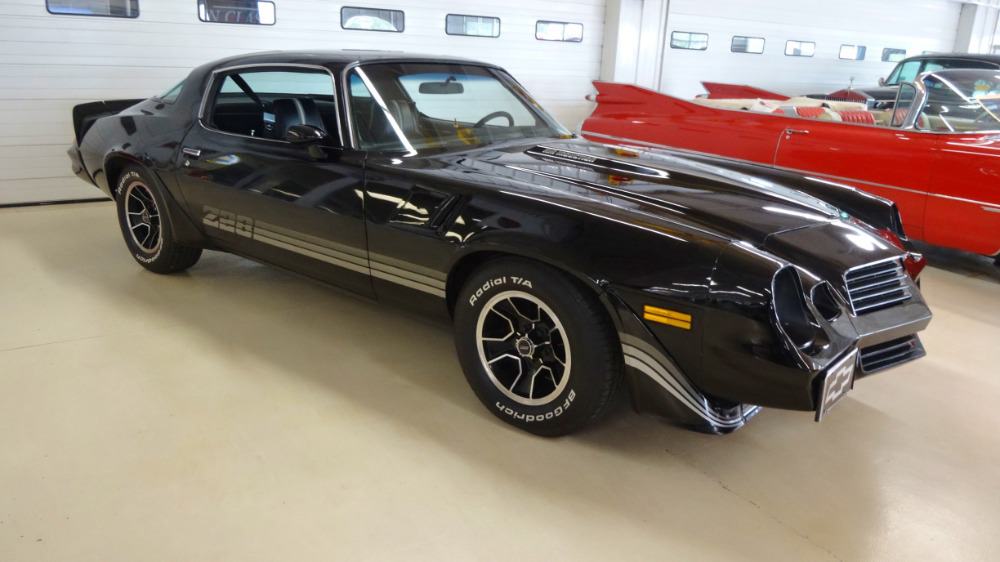
“Chevy Camaro. The Hugger. Take a look. Here’s the shape that turns heads and quickens heartbeats.” 1980 Camaro sales brochure
- The inline six-cylinder that had been the standard base engine for many years was replaced by a 229 CID V6.
- Coming off a record sales year in 1979, total production was cut nearly in half during 1980.
- A new tight mesh grille slightly updated the cars front end.
Muscle Car Specifications
With sales continually rising year and year since 1973, Chevy had made few changes to the styling of the second-generation Camaro other than those designed to comply with increasingly strict federal safety and fuel-economy standards. Other than that new grille that gave the car a subtlety distinctive new look, the 1980 model year was not very different from the 1979 Camaro, though there were quite a few changes under the hood.
The aforementioned V6 produced the same horsepower as the previous inline six, at 115, so buyers of the base models didn’t sacrifice power with the smaller engine. Buyers of the base V8 did have to sacrifice, however, since a new 2 valve 267 CID V8 was introduced as the standard V8, and was only rated at 120 horsepower. The previous year’s 305 V8 returned as an option and was modified to produce 155 horsepower, up 25 from the previous year. Standard once again in the Z28 was a 350 CID V8 that this year also had been modified to produce 190 horsepower, which was an improvement of 15 from the 1979 version.
The Berlinetta returned once again as the “luxury model” Camaro, as it had replaced the Type LT in 1979. As it had in previous years, this model proved popular once again, selling a relatively high amount considering the lowered production of all cars. Other changes to all models were minimal, including a reduction of maximum speed on the speedometer from 130 mph to 85, and the vinyl roof option was eliminated, though glass T-tops remained as a choice.
Production fell from 282,571 in 1979 to 152,005 for 1980, though there were a few factors beyond Chevy’s control that contributed to this. First was the second oil crisis in 1979, and the other was an overall struggling economy. Many of the Camaros were still relative gas guzzlers compared to the new compact and subcompact cars that were sweeping the market, and it didn’t help that base retail prices for all Camaro models rose an average of close to $900. The declining trend would continue through the following year, but would produce increases with the introduction of the third-generation Camaros in 1982.
Coupe
Base coupe prices were up close to $1,000 from the previous year to $5,498.60. Still, they were the top selling Camaro models as per usual, with a total production of 68,174.
Z28
With the introduction of the new, more powerful engine and new trim styles distinguishing it from other models, the Z28 remained the second-best selling Camaro for the second year in a row. The base price for the model represented the first time a Camaro had a base retail price of over $7,000 at $7,121.32.
Berlinetta
The Berlinetta received new wire wheel covers as an additional way to set it apart from other Camaros. The model had a total production run of 26,679, and a base price of $6,261.60.
Rally Sport
With the two-tone paint scheme slightly altered, the Rally Sport edition was distinctive looking compared to its predecessor, as well. Bringing up the bottom end of production, 12,015 RS models were produced, and added $417 to the base coupe price.
Pony Car Competition
As had been the case since 1975, the only competition the Camaro had in the pony car class was from its GM cousin Pontiac Firebird. All the former competitors other than the Mustang had died out, and the Mustang had been converted to a compact car during the mid-70s. However, after a sales slump in the late-70s, the Mustang was selling well again with the introduction of its third-generation, which would become increasingly more powerful throughout the 1980s though it was still smaller than the Camaro. By the introduction of the fourth-generations of both the Camaro and the Mustang (in 1993 and 1994, respectively), both would again be full-fledged pony cars. Until then , however, there was still a decade where the Camaro was the only car that could rightly be called a pony car, and relatively high sales numbers would reflect this.
Engine Specifications
| Type | Size | Carb | Horse Power | Tourqe |
|---|---|---|---|---|
| LC3 V6 | 229ci | 1x2bbl | 115 hp @ 4000 rpm | 175 lb-ft @ 2000 rpm |
| LD5 V6 | 231ci | 1x2bbl | 110 hp @ 4200 rpm | 170 lb-ft @ 2000 rpm |
| L39 | 267ci | 1x2bbl | 120 hp @ 3600 rpm | 215 lb-ft @ 2000 rpm |
| LG4 | 305ci | 1x4bbl | 165 hp @ 4000 rpm | 245 lb-ft @ 2400 rpm |
| LG4 | 305ci | 1x4bbl | 155 hp @ 4000 rpm | 240 lb-ft @ 1600 rpm |
| LM1 | 350ci | 1x4bbl | 190 hp @ 4200 rpm | 280 lb-ft @ 4200 rpm |
Performance Statistics
| 0 to 60 mph | Quarter Mile | Engine | Source |
|---|---|---|---|
| 8.4 sec | 17.3 sec @ 82.0 mph | 350ci/190hp | Estimate |
Still My Favorite
I know that the earlier Camaros were faster and more loved. I know the later Camaros and especially the new ones are much better performers in every aspect. I don’t care. This is my favorite. It is just cool. It has it all: big stripes, T-Tops, a mean sounding engine and flat out good looks. Did I say it is still my favorite?

